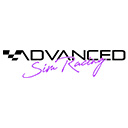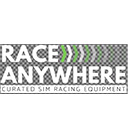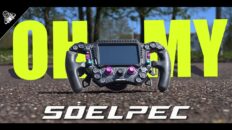What happens when an established company with exceptional quality standards enters the sim racing market? What happens when the very foundation of that company is built on people who love racing and treat sim racing like a tool to improve their real life performance? This is the Asetek SimSports Invicta 3 pedal set which is arguably one of the most hotly anticipated sim racing products of the past 6 months. I have been sent this product for review and have been using them exclusively for the past 2 months. Today I get to share with you everything I’ve learned during that time. I’m Laurence, welcome to the channel!
Product affiliate links & discounts
- Introduction
On the left you’ll see all the sections in this video. I’ve put timestamped links to each section in the description below. While you’re down there please hit the thumbs up button to help YouTube to suggest this video to others like you. 70% of the people who watch my videos are not subscribed. Please consider subscribing and hit the notification bell if you want to be notified about upcoming reviews.
Asetek is a new brand in the world of sim racing, yet many of our rigs, namely our PCs may already contain cooling solutions by Asetek which is a very well established and respected brand. Little did we know that not only does Asetek own GT Racing cars, they also believe in sim racing as a learning tool, as well as a hobby. So for the first time in the history of sim racing (as far as I’m aware) we have a company creating hardware who understands the process of bringing high quality products to market while also having real world racing experience and requirements. That’s reason number 1 for us all to be excited. Couple that with bold claims, early content creator engagements, tight feedback loops, 1 million cycle testing frameworks, their own content creation to explain their vision and a huge passion for what they genuinely believe to be a revolution in sim racing, and you have countless reasons to be excited.
This immense hype has also been underpinned by some very strong Intellectual Property acquisitions. Over a year ago, Asetek signed an agreement for the acquisition of 8 million dollars worth of intellectual property from Finland-based Granite Devices who own the Simucube brand. As far back as November 2020 we saw Asetek acquire Ultimate GameTech (UGT) who create hardware and software found in the top end Cube Controls steering wheels and Simcore dashes. So it’s obvious that Asetek Simsports means business and there’s a lot more than just ‘marketing’ contributing to the hype that surrounds the brand.
Today however, the hype around the Invictas has worn off a little, the price of the Invicta pedals has risen. I have been using them on my rig for an extended period of time. It is my difficult job to analyze these pedals through the eyes of an owner, to equip you with everything you need to know.
data:image/gif;base64,R0lGODlhAQABAAAAACH5BAEKAAEALAAAAAABAAEAAAICTAEAOw==
- First Impressions
My first impressions were influenced, I’ll be honest. I don’t mean that in a negative way, Asetek did nothing wrong. In fact, they did everything right. I was lucky enough to be included in an elite group of product reviewers who received an incredible ‘care package’ style crate from Asetek Simsports. I was treated to all kinds of merch including a hoodie that I now practically live in.
Asetek Simsports had done such a great job of explaining their decisions and their goals, that everything they claimed aligned perfectly with what I received. A well polished, high quality product which felt premium. Almost invincible. I guess that we all get marketed to, but I’m grateful that I’ve had several weeks with these pedals to review them long term.
The retro styling is nice but perhaps looks a little dated by comparison to competitors. Styling matters to many people in sim racing and if I saw these pedals in a lineup with most of its competitors, I wouldn’t be too enthused by its looks, despite obvious attention to detail and craftmanship. One thing I instantly liked though, was the LED strip on the heel plate. This is really beautiful and does make it a focal point of the rig. You can turn this off if you please, but mine is always on even when the PC is off.
Instantly I felt that the pedal faces were extremely aggressive. The raised diamond cut holes make for a super grippy pedal which sounds great at first, but was actually quite uncomfortable to use without shoes and even with shoes, it grated the soles of my racing shoes quite significantly. The pedal faces are probably my biggest criticism of this pedal set. I’ll go into more detail on that in a later section.
There’s no lateral adjustment on the pedals themselves. For me, this isn’t important as the pedal faces are adjustable but even at that, I never run a complicated pedal spacing.
The default pedal incline is at 90 degrees and if you’re not lying horizontally in your rig, I highly recommend taking some of this angle out as it can really cramp your shins in longer stints.
Adjustment is almost 100% tool-less which is very welcome for those quick adjustments that you might need to make between stints. From my experience, I was able to do a relatively good range of adjustments with minimal effort. However, this pedal set does not offer a large range of adjustments compared to its competitors. I’m not saying that’s a bad thing necessarily, but it could mean that your preferences fall outside of the capabilities of adjustment on this device.
- Price
Now that the introductory offer has passed, the price is a little bit startling for most people. at €849 for the 2 pedal set, this really puts these pedals in the high end pricing. If you enjoy a clutch then you need to take an even bigger hit to the wallet with an additional €349 investment for just the clutch pedal. That places the 3-pedal set at €1198 which is a huge chunk of change. At this point it’s worth noting that this is a European company and these pedals are designed and made in Denmark. Realistically, we need to expect European based products to be somewhat more expensive than products from lower cost regions. This is just an economical fact and it’s very important to some buyers.
Asetek has many many years of experience producing extremely high end and innovative products to the highest of quality standards. It is a new brand in sim racing but in many ways, you know what to expect; A reliable product with excellent communications and customer service. These are not words from their marketing materials, these are words that I see uttered every single day about this product.
If you want smooth pedal face, that’ll cost you €59 extra too, so keep that in mind. Again, I’ll cover those in more detail in a little while.
- Installation – Hardware
As these pedals are pre assembled, installation is simple. The only thing you need to do is to attach the clutch pedal, plug it in and then attach the USB plug from the control box to your PC or powered USB hub.
Mounting holes are not based on existing industry standards so you will need to drill holes if you are not using a profile based mounting solution. For those of us with aluminium profile, mounting is relatively simple with 6 mounting points on the 3 pedal set. 4 on the 2 pedal set and 2 on the clutch. The mounting hole at the rear of the throttle is in a slightly awkward place but it’s relatively easy to access once you know how.
Be careful when clipping your USB cable into this guide as many users have reported breakages due to the light plastic construction. This issue is being addressed by Asetek. It doesn’t have any functional impact. You can see a little whitened area on my device that the little clip has weakened at the base.
- Installation – Software
As I hinted, Asetek knows their market. Many people will think that software for your pedals isn’t really that important but for many reasons, it actually is. Firstly, calibration. Calibration sets the range of movement that you use with your equipment. Once calibrated, all software that you use has an agreed start and stop range for the throw of your pedals. This gives a very important consistency across simulation titles.
Asetek also allows you to set curves for each pedal, not dissimilar to most high end pedal manufacturers these days. For example, when driving a car with an extremely sensitive throttle, you may wish for 75% of your travel to control only the first 40% of your in game throttle input. This is common in cars with turbo lag or on slippy surfaces. Whatever your preference, you can set it.
They allow full customisation of the LED on the baseplate, which is really simple and neat. If that’s not for you, you can disable it. Personally, I’m a little bit in love with the lighting on my pedals, especially when combined with my other rig lighting.
Finally, there’s a super cool graphic which accurately reflects whatever you’re doing with the pedals at that given moment, including the exact range of movement. This is a relatively unnecessary feature of the software but it does give great confirmation to the user that the pedals are connected and responsive. It gives great confidence and a sense of quality.
One thing that I’m missing here is the ability to save pedal graph/calibration configurations. I would love to see this implemented and have received similar feedback from the community. If you want to switch between a Formula 1 car and a road car, many will want their pedals to be calibrated and register differently in each.
- Throttle
I love the sense of quality of this product but I must say that the throttle, although better than many, is just too light for my preference. Asetek Simsports did claim that a throttle is a very simple pedal and it’s not worth over engineering, but to me, throttle control is absolutely vital and nothing makes a throttle more controllable than when it’s nice an firm and predictable. I lack that firmness in the Invictas and would love to see an adjustable weight setting on them.
The throttle face plate is a little small. This isn’t much of an issue for those of us who press the pedal with our full leg, where our heel doesn’t touch the base plate. This may often be the case in racing but most drivers use some form of a heel plate to rest on, and then allow their foot to slide on the throttle as they push it. I really missed that additional length with these pedals.
Although that wasn’t my biggest issue. The standard pedal faces are far too grippy for my liking. When I press the throttle, my foot sticks to the pedal and travels with it. This means that when my foot returns to the base place, it gets caught on this heel rest. This might seem like a minor thing but after 25 years of sim racing and driving real life cars, it was extremely difficult to relearn this technique and it really impacted my driving.
Heel and toe was manageable but again, it absolutely chewed up my racing shoes. People in owner groups are 3D printing their own smooth pedal faces at the moment which for a €1200 product, isn’t ideal.
Luckily, Asetek offers these €59 ‘sock friendly’ pedal faces but really, I’d recommend them to absolutely everyone and I race in boots 90% of the time. I do find it unfortunate that those pedal faces are not a free option at the time of purchase. Having to buy them separately seems very wasteful.
- Clutch
The clutch on this product is not overly complicated. It is functional and very adjustable. It serves its purpose well and has a decent weight to it to allow you to control your launches accurately. I did all sorts of h pattern driving with these pedals from rally to drifting to circuit racing. I never felt like I needed more from them but at the price, maybe it’s not unreasonable to expect more. I just don’t know what that ‘more’ actually entails. It’s a perfectly good clutch. The clutch’s price is quite high at €349 but that does include its own base plate too. I dunno, it just seems like a lot for just a clutch pedal. You can run this clutch relatively heavy by adjusting the spring preload and it does feel good. It’s worth spending some time adjusting this clutch pedal to make it feel right as the way it comes from the factory is not the most realistic setting for this clutch, although it may be the most efficient for racing.
- Brake
This is the pedal that most of the hype is about. I’ll come straight out and say that it’s an excellent pedal. I truly believe that it accurately reflects what you would want in a real racing situation. I was quick and consistent with them, but it must be said that they suit my natural preference for a brake pedal: a short throw with a very firm press to get to 100%. So there was very little ramp-up for me to learn how to use these. They are smooth and effective.
It is no doubt to me that the brake is the main selling point of this product, as it should be. The brake is the most important pedal in any race car.
Asetek has pioneered its T.H.O.R.P. technology with this pedal set. This is basically a neatly packaged, sealed and contained hydraulic braking system which boasts a 2 step braking feel. 1. the initial braking effect which brings the pads close to the disc. This step does already have a braking effect and is mainly used for balancing the car or preparing for hard braking and 2. the part where your pedal becomes very firm and the brakes start doing their primary job. In the latter part, there is almost no movement in a real race car and this is simulated well with these pedals. You are relying solely on pushing hydraulic fluid through the T.H.O.R.P. system. Hydraulic fluid cannot be compressed so you cannot lose any of these forces while braking. I found this to work extremely well, but it definitely wouldn’t be to everyone’s preference. The majority of hard braking feels like you’re pushing a wall.
I don’t question the technology and as I say, I was extremely quick and consistent with my quickest pace on previous pedal sets. However, I do feel that all of this is relatively simple to replicate with most high end pedal setups, including non hydraulic variants. Firstly, I think that I like the concept of hydraulic pedals more than I actually like hydraulics themselves. Maybe that’s just me, but hydraulic systems feel great when there’s a considerable amount of brake travel. Realistically though, when the travel is this short, I don’t see hydraulic pedals having much of an advantage if any over traditional load cells.
Whether you use hydraulic sensors or load cell sensors, you eventually hit a wall where there is miniscule movement but more force will still register on the sensor. This of course is on the assumption that your elastomers absorb less force than your sensor requires for 100% activation and that your load cell doesn’t top out before your leg strength does.
If anything, one could argue that only having 2 phases of braking like the T.H.O.R.P. system is somewhat primitive compared to a system which may have 3 elastomers with cups before eventually hitting that load cell wall. More simulated phases are generally, from my experience, easier to remember and easier to sim race with. I guess the point that I’m making here is that although these pedals may do a phenomenal job in recreating what happens in a real car, I question whether we would design our brake in this 2 phase way if real cars didn’t exist at all. Perhaps that’s a hypothesis for another video, but I often imagine a world where sim racing exists, but real racing doesn’t. Would we still use the exact same inputs if we were building the sport without mechanical restrictions?
The answer to this conundrum is simple in this case though. These pedals are made for simulation. They strive to accurately simulate the real pedal conditions, making this an ideal training tool for real race car drivers. This level of simulation comes with compromises. I wouldn’t step into a GT3 car with no racing shoes on, for example. We cannot strive for perfect simulation, yet cherry pick the things we like and ignore the things we don’t like. Real drivers also have a strict diet and training regime… How far do we want to take this?
Philosophy aside, I personally love what they have done with this brake. It’s a true testament to how far we have come and how serious this discipline is being taken within real racing.
Although the travel will definitely be too short for some, have no fear though, because due to demand, Asetek Simsports are working on an extended brake travel kit for the Invictas. This simply softens the initial phase of the braking, although I imagine that it has pained them to make these available as they go against the claimed purpose and unique selling point of this T.H.O.R.P. system. I have been using this extended travel system and I must say I have really been enjoying it. I will review this system in a future video, along with the afore-mentioned pedal faces.
- Base plate
The heel plate is a clever design. It’s well thought out for mounting and cable management. The LED lighting is muted perfectly so that it’s not tacky and the software customisation allows you to completely switch it off if you don’t care for it.
The base plate comes pre-attached with pedals and you cannot use the pedals independently, meaning that there are no means to change the spacing between pedals or to invert these pedals, despite the T.H.O.R.P. system being capable of being used upside down.
The base plate for the 3 pedal set is basically just 2 base plates joined together. Connecting them feels a little bit brittle but once mounted to a solid base plate, it should hold up fine. However, if you do have a lot of flex in your base plate, I do worry about how this extremely heavy brake will pressurise the invicta baseplate mounting solution. If you want to guarantee longevity of this system, consider upgrading your rig’s base plate with some additional rigidity.
The ridges and lettering on the heel plate are also quite grippy. I found myself not moving my feet as much as I usually do when not driving as my shoes kept gripping on something when I had shoes on.
The little dip where the two heel plates meet was actually a nice comfortable resting point for h-pattern driving where there was a lot of clutch action required between left foot braking efforts. This is not by design I would bet, but definitely worth pointing out.
This heel plate is very strong but lighter than many competitors which makes it an ideal candidate for motion systems where weight savings give performance increases.
- Final Thought
Wow that’s a lot to take in. On one hand, these are up there with the best pedals imaginable. Those looking to use these as a training tool will be completely convinced. However, the average leisure sim racer may be more in love with the romance of owning realistic pedals than the actual practicalities. For example, these pedals are practically unusable without shoes due to the pedal faces. Even with shoes, they chew through rubber soles from my experience. I need to clean rubber pellets off my rig after every session.
I really wish that the sock friendly pedal faces were an option at time of order. I feel that excluding that option alienates the more casual sim racing market and potentially impacts the success of this product.
Removing the pedal faces was tough. It’s almost like they were never really designed to be removed. I did eventually get them off when changing to the ‘sock friendly’ pedal faces, but it’s worth noting that you need to be extremely careful with the amount of torque you apply to these very soft bolts. Ensure that your allen key is properly seated before applying any real forces.
If your rig flexes or has creaks or weak points in it, these pedals will help you to find them. I don’t advise these pedals for anyone with a seat mover or other forms of flex in their rig.
There is an extended travel kit which I really like. I do love a stiff pedal and this kit doesn’t negate that. It simply lengthens the throw which I felt gave me additional ability to control my trail braking.
The tool-less adjustability of this system is incredible. It’s very satisfying to experiment with. For your ideal setup, have someone do the adjustments while you sit in the rig. I found this to be so effective that you could literally make an adjustment in the time it takes you to do a pitstop.
The brake is smooth and precise, backed by confidence inspiring software. I was instantly at my quickest lap times and would gladly have these pedals on my rig long term. Bear in mind that the amount of force we apply to our sim racing brakes is a purely subjective thing. We generally do not gain much by having our brake super heavy. A ‘heavy enough’ brake is generally preferred. It just needs to be intuitive and predictable and a bit of weight allows for this. I do think that to get the most out of these pedals, you need to be using relatively high pressure on the brake pedal. I fear that many first time high end pedal users will max out their calibration at the end of the first phase and may not appreciate the value of the second phase. If you only use that first phase, these pedals are not for you and in my opinion, there are better solutions out there with more phases which require less force. To clarify a little more, the first phase of braking with the white elastomer takes 30bar of pressure with is around 30kg/cm2 and is quite heavy for a first time load cell user. the second phase does not fully start until the first phase is done.
However, if you’re a serious sim racer who wants it to be as real as possible, or a real life racer who wants to practice with comparable hardware, this pedal set is right up your street. It’s a phenomenal feat of engineering and it must be remembered that this is the flagship model in their range. If this product excites you then that’s perfectly normal, in the same way a top end supercar would excite you. It comes with compromises and it comes at a premium. You may never own one, but you’re automatically excited about the entire range. That’s what Asetek Simsports are doing here: They know this product isn’t for everyone. In fact, they don’t want it to be for everyone. They have more products on the horizon and again, I think we’re right to be excited.
I hope you have enjoyed this review of this incredible product. I stream every Tuesday and Thursday at 21:00 UK/Irish time and would love to answer any questions you have live on stream. For now, I’m Laurence and I’ll chat to ye later.






































Add comment